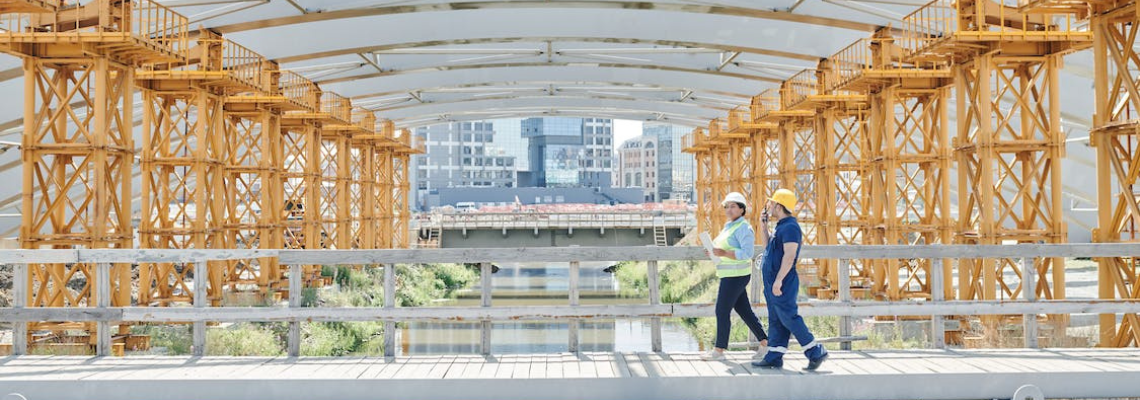Residential construction is a cornerstone of economic development and social stability in South Africa. The housing sector not only addresses the immediate needs of shelter but also significantly influences urban planning, environmental sustainability, and community development. As the country continues to grow and evolve, so do the trends in residential construction. This blog explores the emerging trends in residential construction in South Africa, highlighting the innovative approaches, technologies, and strategies shaping the future of housing.
1. Green and Sustainable Building
Sustainability is no longer just a buzzword; it is a necessity. As environmental concerns become more pressing, the construction industry is increasingly focused on green building practices. Sustainable construction aims to reduce the environmental impact of buildings throughout their lifecycle.
Key aspects of sustainable building include:
- Energy Efficiency: Implementing energy-efficient designs, using insulation, and installing solar panels to reduce energy consumption.
- Water Conservation: Using water-saving fixtures, rainwater harvesting systems, and greywater recycling.
- Eco-Friendly Materials: Utilizing recycled and locally-sourced materials to minimize environmental impact.
- Green Certifications: Achieving certifications like Green Star South Africa and EDGE (Excellence in Design for Greater Efficiencies) to demonstrate a commitment to sustainability.
2. Smart Homes
Smart home technology is revolutionizing the residential construction industry. Homes equipped with smart technologies provide enhanced convenience, security, and energy efficiency. These technologies can be integrated during the construction phase to ensure seamless operation.
Popular smart home features include:
- Home Automation: Systems that control lighting, heating, cooling, and appliances through a centralized network.
- Security Systems: Advanced security features like smart locks, surveillance cameras, and alarm systems.
- Energy Management: Smart meters and energy management systems that optimize energy use and reduce costs.
- Voice-Controlled Assistants: Devices like Amazon Alexa and Google Home that control various aspects of the home environment.
3. Modular and Prefabricated Construction
Modular and prefabricated construction methods are gaining traction in South Africa due to their efficiency and cost-effectiveness. These methods involve manufacturing building components off-site and assembling them on-site, reducing construction time and waste.
Benefits of modular and prefabricated construction:
- Speed: Faster construction times compared to traditional methods.
- Cost Efficiency: Reduced labor costs and material waste.
- Quality Control: Enhanced quality control due to factory-based manufacturing processes.
- Flexibility: The ability to customize and expand structures as needed.
4. Urban Infill and High-Density Housing
As urban areas in South Africa continue to grow, there is a shift towards urban infill and high-density housing. This trend addresses the need for efficient land use and reduces urban sprawl, providing housing solutions within existing urban frameworks.
Advantages of urban infill and high-density housing:
- Efficient Land Use: Maximizing the use of available land in urban areas.
- Reduced Commuting: Proximity to workplaces, amenities, and public transportation.
- Community Development: Creating vibrant, walkable communities with diverse housing options.
- Environmental Benefits: Lower carbon footprint due to reduced reliance on cars and better use of infrastructure.
5. Energy-Efficient Design
Energy-efficient design is a critical trend in residential construction. With rising energy costs and increasing awareness of environmental impact, homeowners and builders are focusing on designs that minimize energy consumption.
Elements of energy-efficient design:
- Passive Solar Design: Orienting buildings to maximize natural light and heat from the sun.
- Insulation: High-quality insulation to reduce heating and cooling needs.
- Energy-Efficient Windows: Double-glazed windows that reduce heat loss and improve thermal comfort.
- Renewable Energy Systems: Incorporating solar panels, wind turbines, and other renewable energy sources.
6. Adaptive Reuse and Renovation
Adaptive reuse and renovation involve repurposing existing buildings for new uses. This trend is particularly relevant in urban areas with a high density of older buildings that can be transformed into modern residential spaces.
Benefits of adaptive reuse and renovation:
- Sustainability: Reducing the need for new construction and minimizing waste.
- Preservation of Heritage: Maintaining and repurposing historic buildings.
- Cost Savings: Often cheaper than new construction.
- Community Revitalization: Revitalizing urban areas and creating vibrant, mixed-use neighborhoods.
7. Co-Living Spaces
Co-living spaces are becoming increasingly popular, especially among young professionals and students. These spaces offer a more affordable and community-oriented living arrangement compared to traditional housing.
Features of co-living spaces:
- Shared Amenities: Common areas such as kitchens, living rooms, and workspaces.
- Affordability: Lower cost of living due to shared expenses.
- Community: Fostering a sense of community and social interaction.
- Flexibility: Short-term leases and flexible living arrangements.
8. Resilient Design
Resilient design focuses on creating buildings that can withstand natural disasters and climate change impacts. This trend is particularly important in South Africa, where extreme weather events are becoming more common.
Components of resilient design:
- Durable Materials: Using materials that can withstand harsh weather conditions.
- Flood Mitigation: Designing buildings to resist flooding and water damage.
- Wind Resistance: Ensuring structures can withstand high winds.
- Climate Adaptation: Incorporating features that address local climate conditions.
9. Biophilic Design
Biophilic design integrates natural elements into the built environment, enhancing the connection between residents and nature. This approach can improve mental health, well-being, and overall quality of life.
Principles of biophilic design:
- Natural Light: Maximizing natural light through large windows and skylights.
- Green Spaces: Incorporating indoor plants, green walls, and outdoor gardens.
- Natural Materials: Using wood, stone, and other natural materials in construction and decor.
- Views of Nature: Designing spaces with views of natural landscapes.
10. Technological Integration in Construction Processes
The integration of technology into construction processes is revolutionizing how homes are built in South Africa. From project management to on-site construction, technology is enhancing efficiency and accuracy.
Technological tools in construction:
- Building Information Modeling (BIM): A digital representation of the physical and functional characteristics of a building.
- Drones: Used for site surveys, inspections, and progress monitoring.
- 3D Printing: Creating building components and entire structures layer by layer.
- Robotics: Automating repetitive tasks and improving construction speed and precision.
11. Sustainable Communities
Beyond individual homes, there is a growing focus on building sustainable communities. These communities integrate housing with amenities, green spaces, and transportation options to create a holistic living environment.
Features of sustainable communities:
- Mixed-Use Developments: Combining residential, commercial, and recreational spaces.
- Public Transportation: Accessible and efficient public transport options.
- Green Spaces: Parks, gardens, and natural areas for recreation and relaxation.
- Community Engagement: Involving residents in planning and development processes.
12. Affordable Housing Solutions
Addressing the housing crisis in South Africa requires innovative and affordable housing solutions. The construction industry is exploring various approaches to provide quality housing at lower costs.
Approaches to affordable housing:
- Modular Construction: Cost-effective and quick construction methods.
- Public-Private Partnerships (PPPs): Collaborations between government and private sector to fund and develop housing projects.
- Micro-Housing: Small, efficient living spaces that are affordable and sustainable.
- Subsidized Housing: Government programs to provide financial assistance for low-income households.
13. Health and Wellness-Oriented Design
The COVID-19 pandemic has highlighted the importance of health and wellness in residential design. Homes are being designed to promote physical and mental well-being.
Health and wellness-oriented features:
- Air Quality: Enhanced ventilation systems and air purifiers.
- Sanitation: Touchless fixtures and antimicrobial surfaces.
- Home Offices: Dedicated workspaces for remote working.
- Fitness Facilities: On-site gyms and outdoor exercise areas.
14. Age-Friendly Housing
As South Africa’s population ages, there is an increasing demand for age-friendly housing. These homes are designed to accommodate the needs of older adults, promoting independence and quality of life.
Features of age-friendly housing:
- Accessibility: Step-free entrances, wide doorways, and wheelchair-accessible spaces.
- Safety: Non-slip flooring, grab bars, and emergency response systems.
- Convenience: Single-story layouts and proximity to healthcare facilities.
- Community Support: Services and amenities tailored to older residents.
15. Customization and Personalization
Homebuyers today are seeking more customization and personalization in their homes. Builders are offering a range of options to cater to individual preferences and lifestyles.
Customization options include:
- Layout Choices: Flexible floor plans that can be adjusted to meet specific needs.
- Interior Design: Custom finishes, fixtures, and decor options.
- Smart Home Features: Tailored technology solutions for enhanced living.
- Outdoor Spaces: Personalized gardens, patios, and balconies.
Conclusion
The future of residential construction in South Africa is being shaped by a multitude of trends aimed at creating sustainable, efficient, and comfortable living environments. From green building practices and smart home technologies to modular construction and resilient design, these trends are addressing the diverse needs of South African homeowners. By embracing these innovative approaches, the construction industry can contribute to a more sustainable and prosperous future for all.
About Victor Terblanche
- Web |
- More Posts(28)



 Building long-lasting business relationships require significant resources, time, dedication and communication.
Building long-lasting business relationships require significant resources, time, dedication and communication. 




